Progress has been steady. When we arrived for our next visit, this is what Ron was doing.
5-Star knows a lot about classic muscle cars. I don't. I especially don't know anything about the bones that support the car. Ron took the time to explain to me what he was doing. And with 5-Star, he made sure to consult about options and necessary fixes.
These are the lessons I learned today:
1. This is a digital protractor. He uses it to be sure that the roll bar and the frame rails will be parallel to the body when
the car finally stands on her own four wheels. This is imperative because the body is not on jig while he is building
her frame.
2. Ron's wizardry comes in the form of arc welding, specifically a process called TIG (tungsten inert gas) welding. The
welder doesn't use open flame, and therefore there were no sparks flying.
3. The fanciest polarized prescription sunglasses are not good enough to protect your... well, MY eyes from the flare of
the TIG welder. "Tonight you're going to hate life because your eyes will feel like they have hot sand in them," Ron
said.
4. This is the differential. It allows the driving wheels to rotate at different speeds, which is critical when the vehicle is
turning. It makes the wheel that is travelling around the outside of the turning curve roll farther and faster than the
wheel on the inside. "For our purposes, we call it the ford 9-inch," said 5-Star. And that is the extent of my knowledge
about the differential.
about the differential.
By the way, Ron wasn't kidding about the hot sand.
.
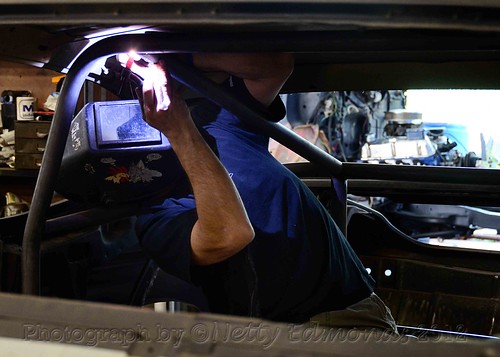
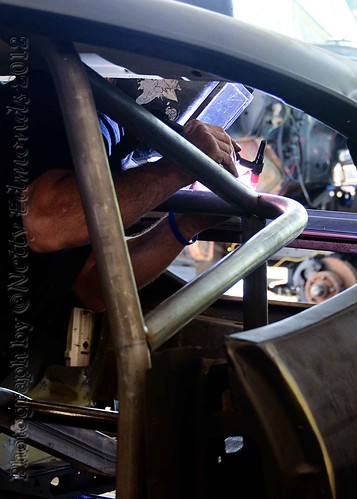
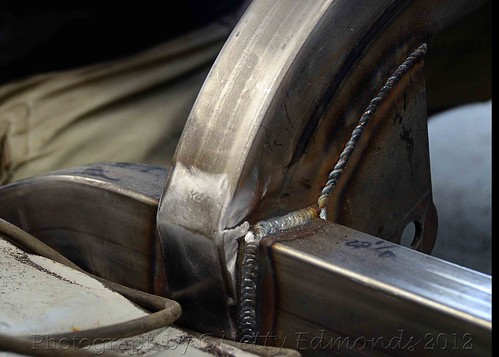

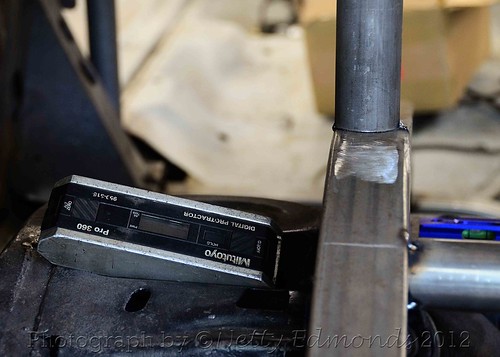
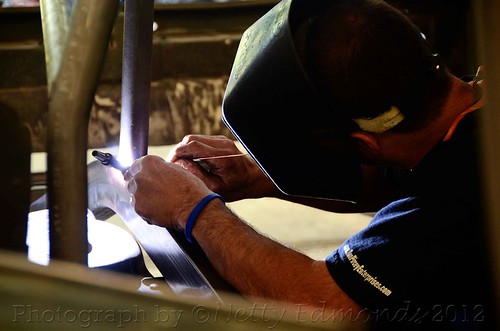
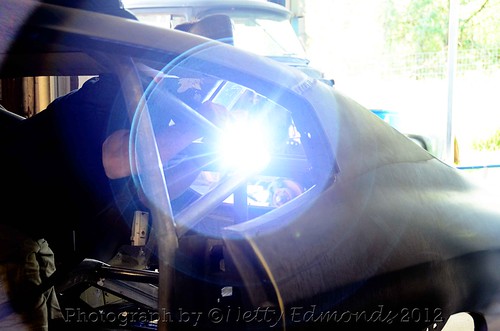
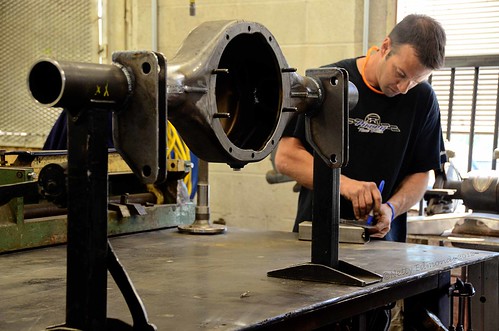
No comments:
Post a Comment